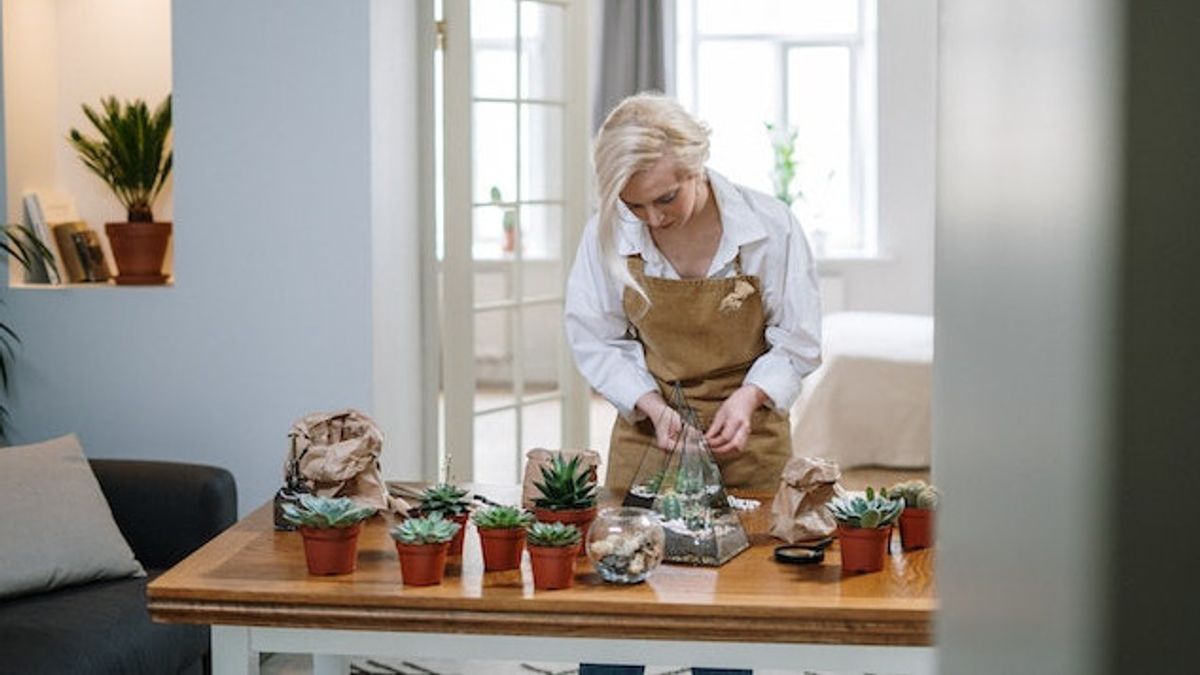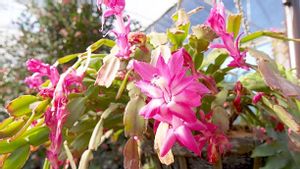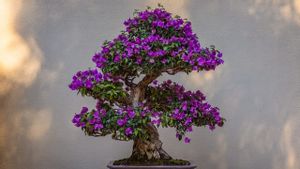JAKARTA - Have you ever dealt with plants that are almost dead? Some of the most common reasons why plant growth worsens are too much or lack of water, not getting the right amount of sunlight, environmental changes, insect and pests, or lack of nutrients.
Instead of throwing away the plant, you can try to save it. From identifying to correcting the mistakes you have made, these simple steps will help restore the health of the plant that is almost dead. Reported by VOI from Reader's Digest, Monday, August 7, "said the way the gardening expert John Valentino, here's the description.
If you think the wilted plant will die soon, it's best to hold back the thought first. Try to look at your plants carefully. If there is still a green element left there, it means that plants can be saved.
Start by checking the roots. As a plant support system, the roots provide a lot of information about the health condition of the plants as a whole. Even though other parts of the plant show that conditions are not saved, the roots can still receive nutrients and enough water to maintain them.
"Healthy roots will look montok and white brownish with a white end," said Jennifer Morgenthaler, an agricultural instructor at Missouri State University.
In order to recover, make sure the roots of the plant must stay alive. Next, is to find out the problem and how to save the plants back.
Plants need water to survive and develop. However, the reason why plants can almost die is because plants are watered too often.
"A plant that has too much water will have brown or yellow wilted leaves with humid soil," said Valentino.
"This will affect the roots, which can begin to rot," he continued.
If you have too much water on the plant, you need to make some changes immediately.
"Get rid of plants from direct sunlight and stop watering until the soil drys up," Morgenthaler suggested.
If the soil is already wet, replacing soil and pots is also a way to save wither plants. After that, change the watering frequency so that the plants return to health.
Just like excess watering, water shortages can also cause plants to wilt.
The leaves will start to dry and have brown colors on their ends, then completely turn brown, then die, and fall out. The soil will also crack and stay away from the edge of the pot," said Valentino explaining the characteristics of the plant's lack of water.
Of course the solution is to water it, but it must be done in the right way. If the soil is too dry, the quick way to revive it is to let it be submerged in water for several hours. This technique can change the wilted plant to fresh again.
After that, do watering more often and give plants the same amount of water. Make sure to give water time to absorb to the roots before watering is done again. Soil moisture measurements can help you monitor soil moisture and make sure you are on the right track in caring for the plant that has wilted.
SEE ALSO:
Brown leaves because plants rot should be removed because the color will not return to green. Focus on new growth. To remove it, cut dead leaves with dead leaf scissors or flip-flops gently use your fingertips. Usually, dead leaves will easily escape the stems, but if it's difficult to pull them out, use scissors.
Tips for saving the next dry plant are by cutting the stems until the green part remains only.
"You're bringing the plant back to the healthiest part, but if the trunk dies, let it be at least two inches above the ground," suggested Valentino.
Then, change the land along with pots. Morganthaler recommends changing pots in size greater than before. Remember, changes may not appear at the start. It takes a few weeks or longer for the plant to adapt, before getting better again.
Lighting is an important factor in plant health, so make sure ornamental plants get optimal amounts of light. After knowing if your ornamental plant types prefer full sunlight, partial sunlight, direct sunlight or indirect sunlight, you can move them to the appropriate area at home.apparent plants will die quickly if they are not treated according to their lighting needs.
Giving additional nutrients is a side effort to accelerate plant recovery. Malnutrition plants show the characteristics of weak stems or color-changing leaves. So to revive dying plants, you need compost or fertilizer according to plants.
Changing the soil also actually helps because the soil can run out of nutrients from time to time. However, if the plant is already in bad condition, take care slowly. Do not make sudden changes at once because the plant is in a state of shock and more vulnerable to problems.
It takes time to restore the condition of the plant to be healthy again. The key is to be patient. Keep taking care of the plant for a few weeks and then re-evaluate.
"After making the efforts above, it takes up to one month to see the results," said Valentino.
You may also need to solve the problem before finding out the real problem and the next solution. So the process may take longer than expected.
If you've tried everything, including waiting for at least a month, and the plants haven't made any progress, this is the time to say goodbye. Instead of throwing the plants away, put them in a compost bin.
Dead plants can be converted into nutrient-rich soils that function as natural fertilizers that are beneficial for other plants. This means that your plant has a new life and contributes to the health of other plants, as well as helps the environment.
The English, Chinese, Japanese, Arabic, and French versions are automatically generated by the AI. So there may still be inaccuracies in translating, please always see Indonesian as our main language. (system supported by DigitalSiber.id)


















